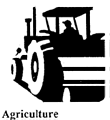 Issues Issues
Setting priorities for addressing problem areas given the roles of governments and landholders and the range of existing policies.
Summary of Final Report The realisation of the need to implement agricultural practices which not only improve the economic well-being but also maintain, or preferably enhance, the quality and integrity of the environment, is central to the recommendations made by this sectors Working Group. The Working Group believes it is important to plan a sustainable future; to understand that some current practices need to be discarded, that others need modifying to reduce or eliminate undesirable side-effects, and that new and better approaches need to be developed. In particular a more holistic approach is promoted, using whole-farm and regional planning linked to a total catchment area or similar identifiable ecosystem. Agricultural systems are complicated and not well understood; we need more knowledge and understanding of them and we need effective ways of providing this information to farmers and to encourage them to use it. The Working Group believes that while regulation has its place and that governments may need to intervene in some cases, it is to be considered a 'last resort'. According to the report the great majority of individuals involved in agriculture are protagonists of the sustainability ethic - they see sustainability as in their own long-term self-interest. This has guided the Working Group to direct its recommendations towards the establishment of processes and instruments which encourage the 'bottom-up' approach; self-help initiatives and community cooperative actions. The group acknowledged the strength of community based groups and supports extension, with appropriate assistance and resources, of these groups activities. There was consensus in the Working Group on the priority objectives for ESD in agriculture, primarily: maintenance of long-term productivity; improved system resilience and stability; increased efficiency of use of resources in both physical and economic terms; equity; and improved human health and safety. These objectives take into account the potential for the operating environment to change over time as knowledge and understanding of ecosystems expands, new technologies and products are developed, consumer preferences change and society's attitudes to and views about environmental issues also change. Against these objectives, the Working Group has developed a set of performance indicators as a basis for assessing whether progress is being made towards ESD in agriculture. Key recommendations:
The Working Group also made recommendations on control of animal and plant pests; water management; chemical usage and monitoring; the inclusion of ESD principles in the development of curricula at all levels of education; research; institutional arrangements; international trade and aid; and Greenhouse.
|
||||